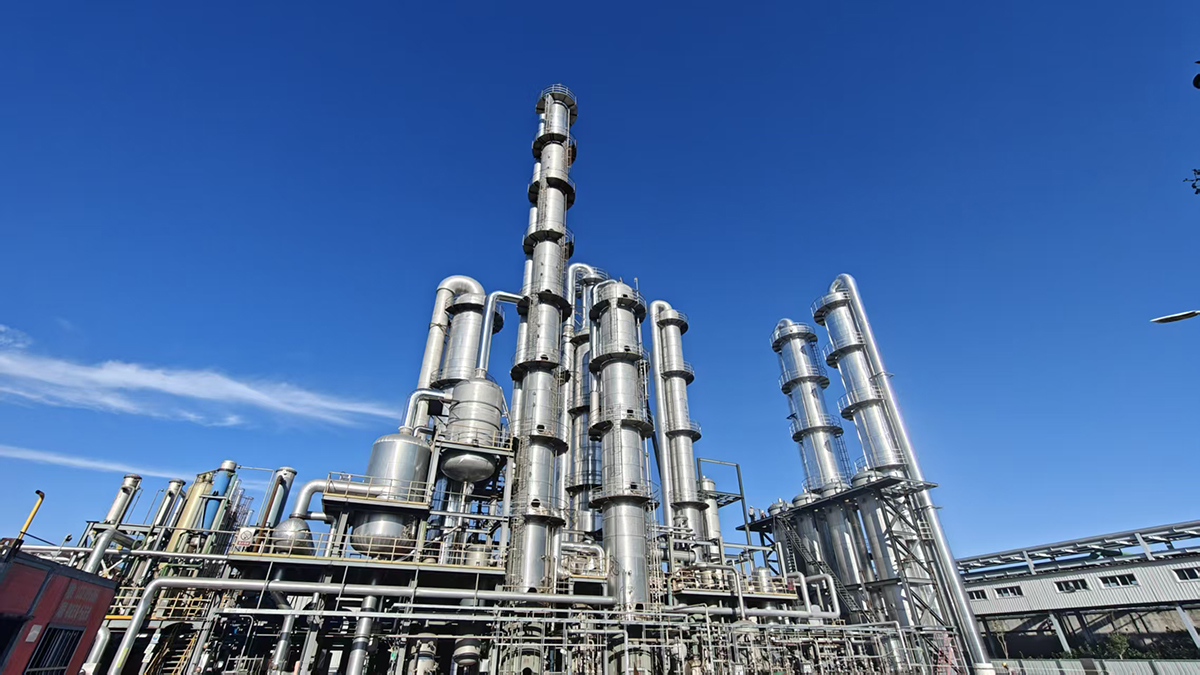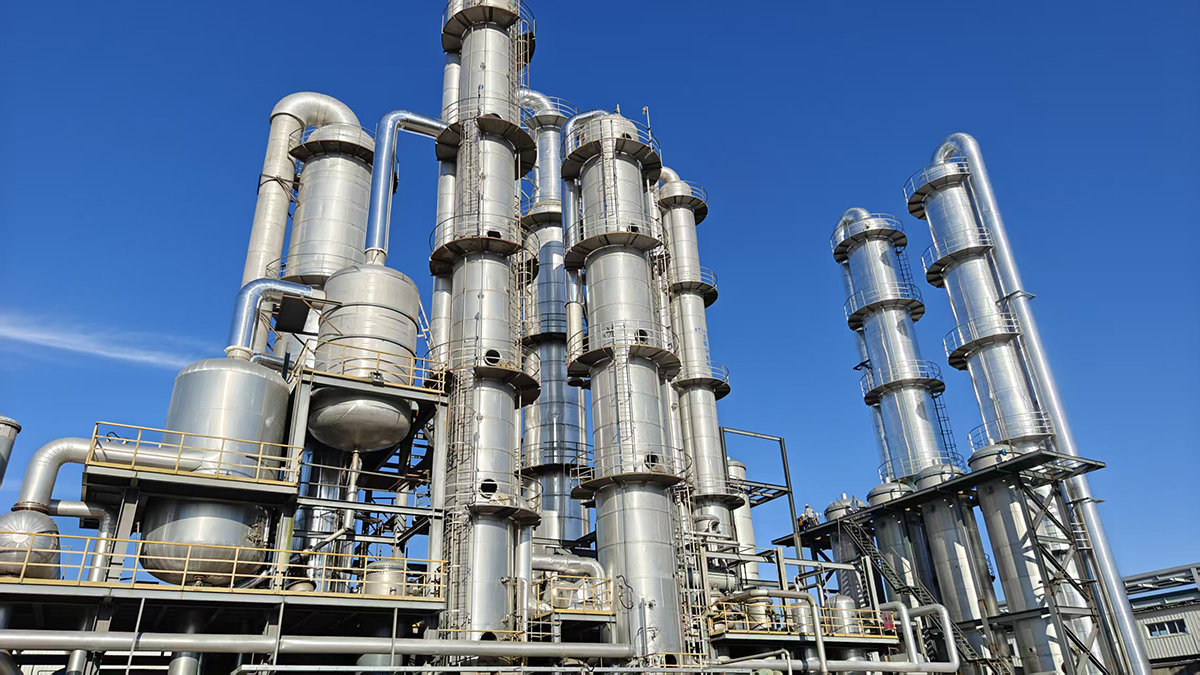DMF Effluent Recovery Plant
General Description
This proposal is designed for the recovery of DMF effluent generated during process of RO membrane production. Due to the low effluent concentration (~5%), considering the operating cost of the DMF effluent recovery equipment, the process flow is designed based on a three-efficiency energy-saving process, including two-stage concentration and dehydration, one-stage distillation and one-stage deacidification and refining. At the same time, the environmental protection facilities are fully considered to ensure that the entire set of equipment meets the requirements of advanced technology, energy conservation, and environmental protection.
According to the waste effluent capacity of 1,250KG/H generated from the RO membrane, taking into account the equipment maintenance factor and the subsequent expansion and development needs, the DMF effluent recovery capacity is calculated and matched based on 1.2 times of the maximum volume, I.E. the recovery capacity is 2T/H.
Flowchart Description
This recovery system adopts an advanced DMF distillation process with steam as the heating medium. The system uses a five-column three-effect energy-saving process, including preheating of the original effluent, two-stage vacuum dehydration, DMF vacuum distillation and deacidification, and the removal of dimethylamine from the top water of the column using the residual heat of the system. The system also includes a solid residue treatment system to remove residues and ensure continuous operation. The treated top water of the column can be recycled and reused in the production line. The specific process features are as follows:
High recovery rate
Pure DMF is stable in nature, but its decomposition rate increases significantly with temperature when trace amounts of acid or alkali are present. To maximize the recovery rate and minimize the decomposition of DMF, the distillation column operates under negative pressure, with the bottom temperature of the distillation column controlled at 145-148°C.
Energy-saving
This set of equipment uses a five-column three-effect distillation system, where heat is reused three times in the system, significantly reducing the energy consumption of the entire device. Compared with the two-effect evaporation, it saves 30% of energy. Additionally, the system is equipped with a waste heat recovery device, making the entire device even more energy-efficient.
The three column feed evaporation systems all use large-flow circulation pumps for forced circulation, effectively delaying the clogging of the feed heaters by solid residues and ensuring the effective operation time of the system.
The system adopts DMF discharge waste heat and heat recovery equipment for the top water and steam condensate of the hot column, maximizing the utilization of waste heat and reducing the energy consumption of the system.
High-quality and stable products
The deacidification system used in this device can simultaneously remove formic acid and dimethylamine from the DMF product, making the DMF product quality approach synthetic grade standards.
Environmentally friendly and low operating costs
This dimethylamine removal device has low investment and energy consumption. It uses the residual heat of the system as the heat source for the deamination column, eliminating the need for external steam supply.
This deamination device mainly operates through distillation, with no wastewater or waste gas emissions. The top water after deamination treatment can be cooled and supplemented to the production line for reuse or used as evaporation make-up water in the circulating water system for recycling, without the need for discharge, thus saving water resources. The dimethylamine water solution is neutralized and absorbed in the acid spray column, eliminating the odor of dimethylamine.
Stable control
This device uses a DCS control system. Motors are controlled by frequency converters, which not only improve control accuracy but also enhance operational reliability, effectively avoiding mis-operation.











